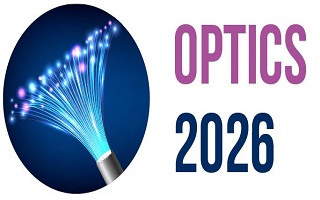3rd International Conference on
Optics and Laser Technology
October 29-30, 2026 | Berlin, Germany

Optics 2026

Ernst-Abbe-University of Applied Sciences Jena, Germany
Abstract:
Laser polishing has developed into an innovative technique for finishing optical glass surfaces and offers a non-contact, high-precision alternative to conventional mechanical polishing processes. In this thermal process, the energy of a laser, often a CO₂laser, is used to melt the glass surface locally and smooth out irregularities due to surface tension. Recent advances in laser parameters and beam shaping enable the processing of complex geometries, such as free-form surfaces, which present a challenge for mechanical processes. Research results show that surface roughness in the nanometer range can be achieved and at the same time processing time can be reduced compared to conventional methods. Key applications include the manufacture of optical components in 2D, 2.5D and freeform, making the process particularly relevant for high-performance optics in scientific instrumentation, medical devices and photonics. This paper examines the process dynamics, material interactions and potential for integration into modern manufacturing processes and highlights the economic and technical advantages over conventional polishing processes.
Biography:
Jens Bliedtner studied precision engineering at the Friedrich Schiller University in Jena. He wrote his doctoral thesis in the fields of development of pulsed laser systems and special methods in macro material processing. Since 2000, Bliedtner has been a professor at the Ernst Abbe University of Applied Sciences in Jena and the head of the department production engineering and automation of production processes. Currently, he is working in the research fields of optical technology, laser material processing and additive manufacturing.
